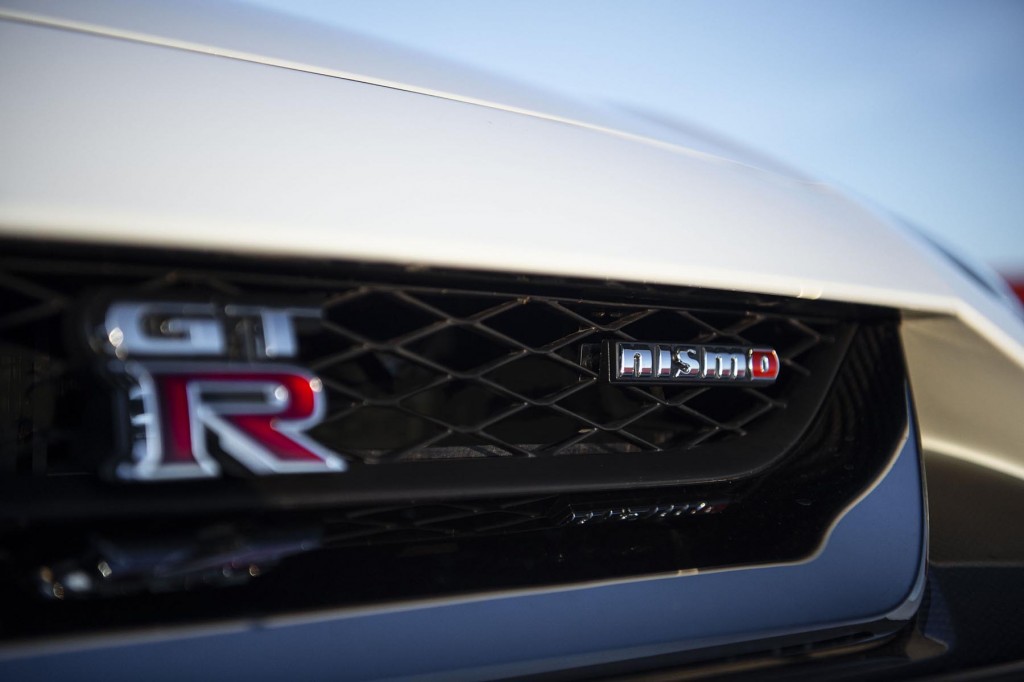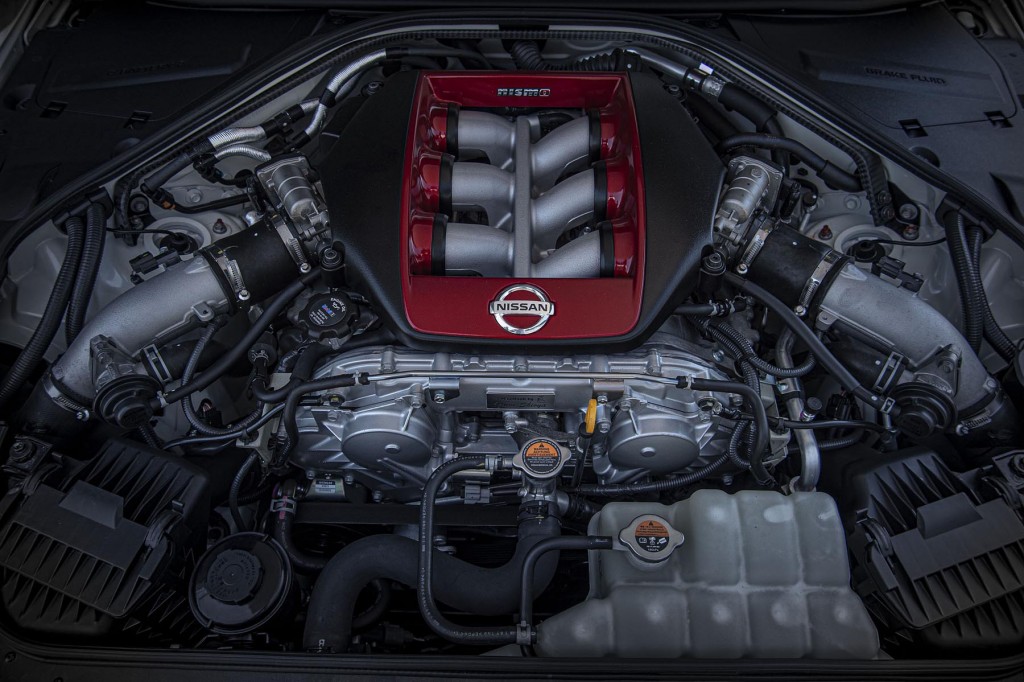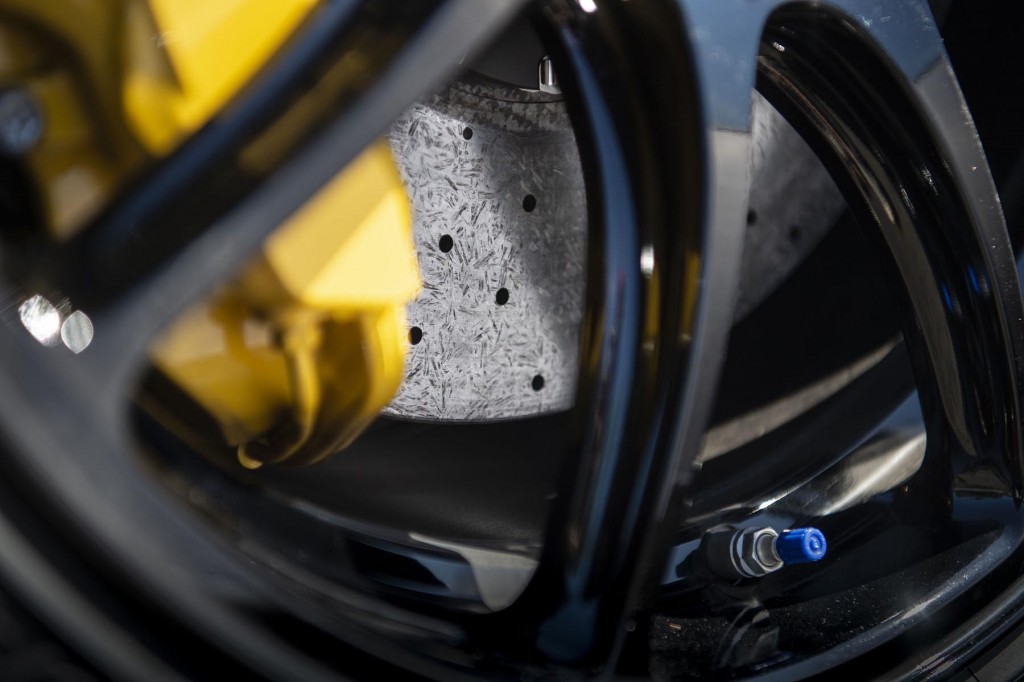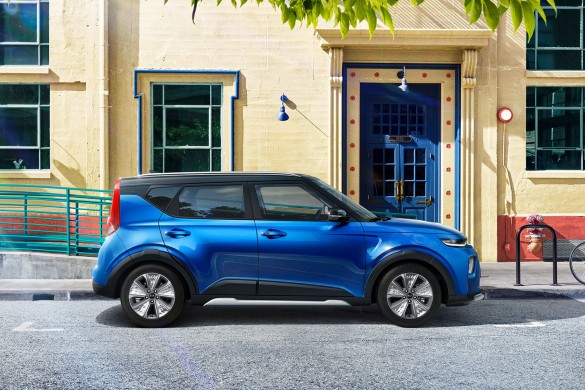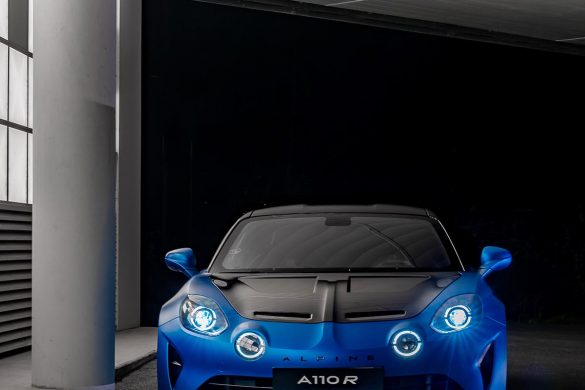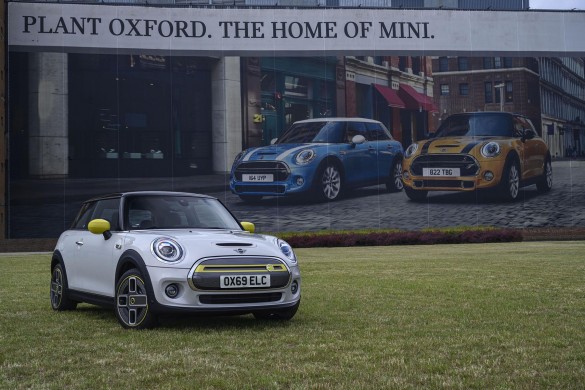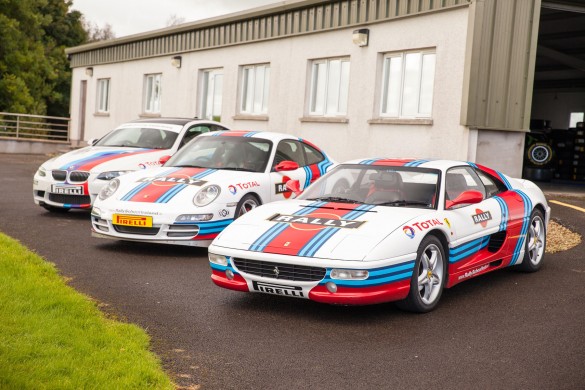The 2020 Nissan GT-R NISMO is now available to order in the UK, priced at £174,995 OTR.
Unveiled at the 2019 New York International Auto Show, the 2020 NISMO offers race car-inspired upgrades and tuning improvements to maximise the model’s exhilarating performance.
Alongside the updated GT-R NISMO, a new 2020 Nissan GT-R Track Edition is also introduced, priced from £99,995 OTR. Sitting between the GT-R and GT-R NISMO, the Track Edition is offered for the first time with optional carbon ceramic brakes (£7,500). Further options to enhance the circuit credentials of the version include:
- Carbon seats – £6,750
- Carbon spoiler – £3,000
- Carbon spoiler & boot lid – £4,500
- Carbon roof – £2,000
The pedigree
The 2020 Nissan GT-R NISMO is the culmination of two of Nissan’s most important nameplates: GT-R – representing 50 years of history, pedigree, success in racing and a global fan following – and NISMO, NISsan MOtorsports International Co., Nissan’s in-house tuning arm that pursues performance at a maniacal level by perfecting the smallest of details. True to what NISMO stands for, the 2020 GT-R NISMO is a more extreme, track-oriented version of the GT-R that has matured through rigorous refinements, and become sharper and more rewarding as a street car.
The 2020 GT-R NISMO is about total balance. New, race-proven turbochargers, improved gearbox shift control, lighter components, reduced overall mass and upgrades to the brakes, wheels and tires contribute to a 2.5-second reduction in lap time around Nissan’s development track, not to mention an improvement of the GT-R’s inherent high speed stability, even at speeds of up to 186 mph. Here’s how Nissan achieved this remarkable improvement.
Building on the kaizen mindset
The pursuit of perfection requires persistence. The constant need to evolve and fine-tune – this is kaizen. Kaizen is at the heart of the GT-R NISMO, a team wide mindset that has pushed the men and women behind this car to challenge themselves each step of the way. They show an inherent curiosity and “what-if” mentality when revisiting every minute detail. Small improvements may not seem important in isolation, but it’s when they’re combined as a whole that a difference becomes perceptible. That’s when a car’s character grows; it’s not all about numbers and performance but the holistic effect – how the GT-R NISMO becomes an extension of a driver’s body and mind as the vehicle carves a line through a favorite road or race track.
Led by Tamura, executed by the team
Chief Product Specialist Hiroshi Tamura – known as “Mr. GT-R” – has been at Nissan for more than thirty years. Dedicated to evolving and improving the GT-R, he has been part of almost every step of the model’s evolution.
His love for Nissan’s most legendary sports car was sparked early. At age 10, he witnessed Takahashi Kunimitsu take his blue and white 2000 Skyline GT-R racecar to an epic finish at a very wet Fuji Speedway, beating strong rivals like Mazda and its RX3. Tamura knew from that moment that he wanted to not just watch the GT-R but also be part of its success.
Today, Tamura ensures the GT-R continues to evolve year in and year out, staying atop a growing field of competitors, including the most expensive crop of supercars – and in some cases hypercars.
GT3 turbos for the VR38DETT
Racing improves the breed, and that is very much the case with the 2020 GT-R NISMO. Like in racing, precision is the key to performance. Each VR38DETT is hand-assembled from beginning to end in a special clean room by master technicians known as takumi. This elite few assemble the complex powerplant with the passion and precision of a true craftsman. Just as a great artist signs their work, so do the takumi, with a special aluminum name plate on the front of each engine that meets their standard.
The car’s new turbochargers are the same ones currently used on the GT3 racecar version of the GT-R. These employ a 10-vane turbine wheel (one fewer vane than the current model), where the vanes are 0.3 millimetres thinner. This accounts for a 14.5% reduction in mass, and therefore inertia (24%), allowing for an increase in transient response. Consequently, having one less vane would reduce flow rate, so to counteract, a new back plate was created to prevent exhaust gases from flowing behind the turbine blades, drastically improving flow efficiency. Through the latest fluid and stress analysis, special attention was given to the actual design and profile of the vanes. Their new shape optimizes efficiency with exhaust gases to boost flow rate resulting in improved boost response and acceleration as well as in gear “pickup” in any situation.
The diagram below gives an idea of how response improves by comparing the car with the previous GT-R NISMO, accelerating from 110 kph and 4,000 rpm in fourth gear (manual mode). The response is immediate and instantly felt. The following diagram shows engine response improvement of 20% as the driver increases throttle pressure, from 0% opening to wide open throttle. While power remains unchanged at 441kW (600ps), the result is a sharper feeling that further enhances the overall character of the hand-assembled VR38DETT.
A revised titanium exhaust system now has a more emphatic – yet not intrusive – tone coming through to the cabin. Handcrafted burnished tips are a signature touch of the lightweight system.
When in R-mode, the improved 6-speed dual-clutch transmission now shifts gears more aggressively and intuitively thanks to a new algorithm for the adaptive shift control (ASC). This selects the best gear for any driving scenario and can especially be felt during braking and approach into a corner, where the driveline feels more precise with faster downshift reactions to help reduce understeer on entry. With engine speed kept at a higher rate thanks to lower gear engagement, acceleration also improves when powering out of a corner.
With aerodynamic gains in mind, the design of the 2020 GT-R NISMO has undertaken an evolution. The changes are completely functional, increasing cooling of key areas like the engine bay and brakes, all without negatively affecting the drag coefficient value of 0.26.
Aerodynamics, design and hefty dose of carbon fiber
Further setting the most potent and exclusive of all GT-Rs apart from the rest is the amount of carbon fiber found throughout the car. Most components are lighter compared to the current model. This includes the front and rear bumpers, front fenders (-4.5 kilograms), hood (-2 kilograms), roof (-4 kilograms), side sill covers, trunk and rear spoiler. Following the theme of kaizen, each component has been improved to cut weight, increase downforce and enhance aerodynamics. Combined, these exterior parts alone have resulted in a total weight saving of 10.5 kilograms, joining the nearly 20-kilogram reduction through upgrades and new components.
The most significant piece of carbon fiber application is the roof. New for 2020, the carbon fiber roof removes a substantial amount of weight where it counts most, lowering the car’s center of gravity for improved handling and feel. The roof panel itself is made by using a world-first technique of combining a Prepreg Compression Molding process with a carbon plate and lightweight hard foam sandwich structure. This gives the carbon structure a tighter and lighter weave, improving sound insulation and a striking appearance. Other changes in the carbon fiber construction are the NACA ducts on the hood, which are now incorporated into the composite structure.
The GT3 GT-R racecar heavily inspired the design of the new front fenders. They now sport louvres that increase front downforce by 7 kgf without creating additional drag. The wind tunnel-tested vented fenders also help smooth airflow along the rest of the body and avoid creating turbulence at the rear wing, promoting even greater high-speed stability. As a multi-functional feature, they also help funnel hot pressurized air out and away from the engine bay.
Color choices for the 2020 Nissan GT-R NISMO include Solid Red, Jet Black Pearl, Super Silver Quadcoat and Pearl White Tricoat. All color schemes feature black side mirrors that differentiate the car from other GT-R models.
The brakes: Brembo calipers meet carbon ceramic rotors
Nissan collaborated with Italian brake manufacturer Brembo to create an all-new brake package for the 2020 GT-R NISMO. Special large calipers join carbon ceramic rotors, the biggest ever fitted to a Japanese performance car at 410 mm (16.1 inches) in the front and 390 mm (15.3 inches) at the rear.
The six-piston front and four-piston rear calipers are exceptionally rigid. Their all-new construction brings a significant improvement to brake reaction time. This delivers a more responsive and progressive brake pedal, full of feedback to allow precise modulation of braking force. The result is the ability to shed speed quicker and more effectively while staying resistant to fade.
The biggest advantage comes from the carbon and silicon carbide structure of the rotors themselves. They allow for a 16.3-kilogram total drop in unsprung weight. Mounted on floating aluminum billet center bells, the new rotor and oversized caliper setup is finished off by new, specially formulated brake pads that generate higher friction levels across the full operational range. The pads also give a firmer, more reassuring pedal feel.
Front rotor cooling has also been improved by altering the angle in which the air guides are mounted, helping funnel a higher flow of air toward their centers. As a final touch, the calipers have been dipped in a heat-resistant yellow paint that is not only able to endure temperatures over 1,000 degrees Celsius but is resistant to discoloring from hard use and repeated temperature cycling.
Handling, grip and steering redefined
The 2020 GT-R NISMO’s suspension tuning improves cornering stability (lateral G), with enhanced yaw-rate response and smoother ride quality. The steering features better linearity and precision than ever, requiring minimal corrections even at speeds reaching 300 kph (186 mph).
The exclusive 20-inch RAYS forged aluminum wheels are a combined 100 grams lighter and incorporate a new nine-spoke design that enhances rigidity despite the weight reduction. A diamond-cut white-and-red NISMO logo on the rim marks their exclusivity.
The newly designed Dunlop tires feature a new rubber compound, boosting grip by 7%, and a tread pattern with one fewer groove for the fronts, which increases the contact patch by 11%. The tire’s shoulder shape is slightly rounder so that when the car leans during cornering, more rubber surface makes contact with the ground, generating more grip. Overall, tire cornering force is up by 5%. This also improves the steering response in terms of straight-line tracking and stability compared with the current model, without impacting rolling resistance performance.
The car’s Bilstein DampTronic shocks were carefully retuned in both rebound (20% softer) and compression (5% softer) to take into account the overall near 30-kilogram reduction in weight. The revised spring rates contribute to a more linear steering response and increase in road-holding ability.
Further building on the kaizen mentality, more attention to detail continues right down to the chassis and its construction. A special type of bonding between the welds on the chassis and body results in a sturdier-feeling chassis, more composure over imperfections and more precision through all controls when pushing the car hard.
Hip-hugging comfort inside
Inside the cabin, the exclusive GT-R NISMO front seats created by Recaro have been enhanced for 2020 to offer better containment for the driver and passenger. This is achieved through a three-layer structure in which carbon fiber sandwiches a main inner section to improve the way the upper body is supported. The addition of a core frame structure to the carbon shell has increased the torsional rigidity of the seats (approx. 20%), helping fight against flex when pushing hard through the corners as well as giving more general support when actuating the brakes. This didn’t impact weight negatively: each seat is 1.4 kilograms lighter.
Only one interior color combination is available, a NISMO-specific black leather with red accents. The seat inserts are Red Synthetic Suede, and there is Dark Gray Alcantara on the steering wheel, dashboard and roof liner.

